2 June 2013

Bright flowers spill over the walls everywhere in Gaza’s old city.
Before I went to the Gaza Strip for the Palestine Festival of Literature (palfest.org), I had only ever experienced that part of Palestine through words, images and videos.
I had imagined Gaza City would feel much more intensely crowded and dense, and there are of course areas that feel that way. But my impression of the old city was that it had the laid-back feeling of a smaller coastal town, one whose history extends to ancient times.
Destruction due to Israeli bombing is visible in many places around the city and up and down the Gaza Strip — sometimes a particular building on a street has been taken out leaving a mass of oddly angled concrete slabs and steel reinforcement bars, sometimes a whole city block. It is terrifying to imagine what it must have been like when Israel was wreaking such devastation.
But destruction was not my overwhelming impression of Gaza City and not what I chose to focus on in these images.
Gaza City is all about life: just like every other city in the world, people wake up every day and go to work. Students and children flow into their schools as the early morning quiet is overtaken by the sounds of human voices and cars blowing their horns.
For thousands of years, Gaza, as a coastal city, was a cosmopolitan crossing point — which makes its isolation today as a result of Israel’s internationally-backed siege and sea blockade all the more cruel and poignant.
These are just some of the sights that caught my eye. What no image can record is the kindness, warmth, hospitality, openness and intense engagement of everyone I met. That, more than any buildings or stones or landscape, will always be my memory of the place.

The perforated ceiling of the Hammam al-Samara, reputed to be one thousand years old and Gaza’s last functioning Arabic bath house.

An inscription at the Hamam al-Samara, saved from demolition and restored by the UNDP and the Islamic University of Gaza, is the basis for dating the bath house to one thousand years ago. The bath house is used by both men and women at different times of the day.

On a Friday morning, the palm-lined streets of Gaza City are exceptionally quiet.
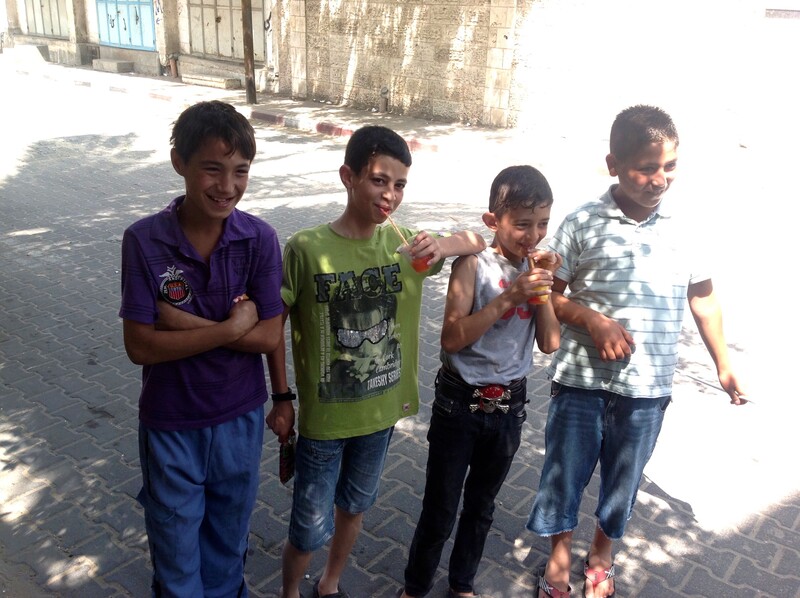
Abdullah, Yehia, Amir and Abdullah insisted on having their photograph taken.
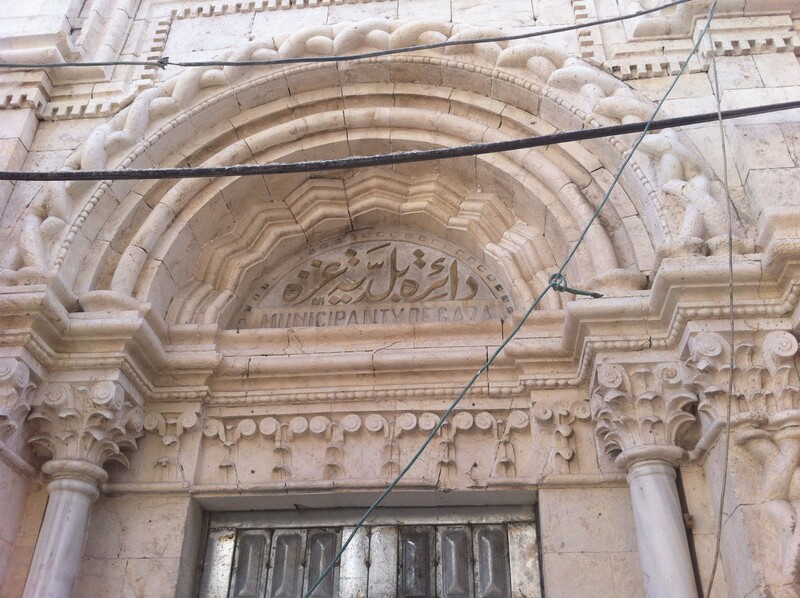
The old Gaza City town hall, currently undergoing restoration.
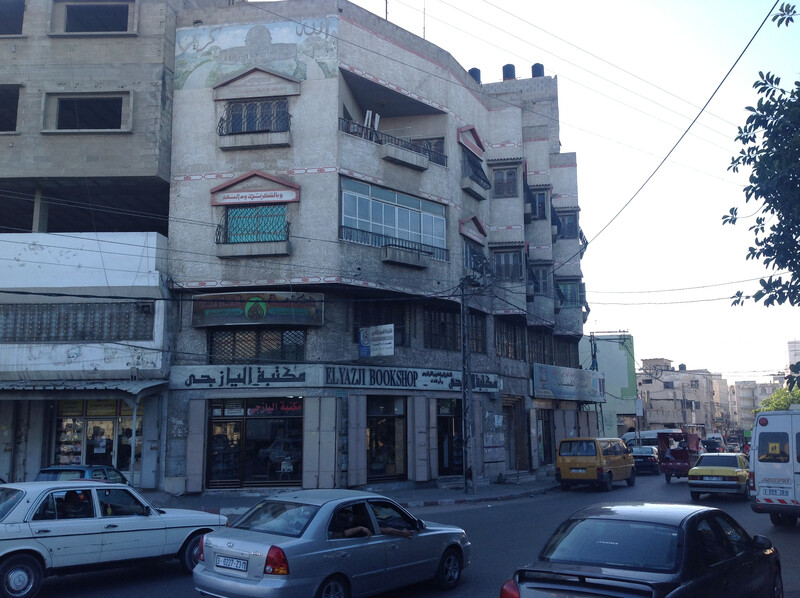
The al-Yazji bookshop in Gaza City’s al-Busta Street.
The Great Mosque of Gaza
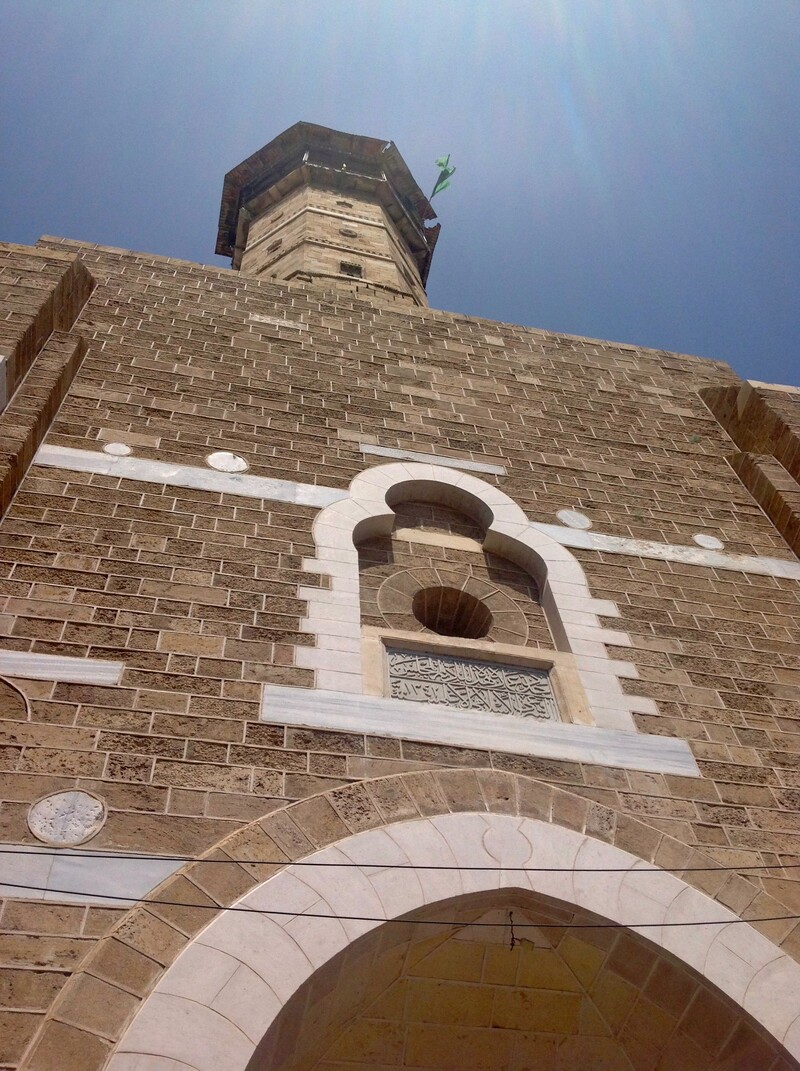
The minaret and entrance of the Great Mosque of Gaza, also known as the al-Omari Mosque.
The earliest origins of the Great Mosque of Gaza lie in the 5th Century CE as a Byzantine church. It has been built and rebuilt many times through its long history, and was most recently heavily damaged by British bombardment during the First World War.

The courtyard of the al-Omari Mosque with Gaza City apartment buildings in the background.

After Crusaders seized the mosque they built the Cathedral of John the Baptist on its site. Part of the cathedral is believed to form part of the mosque.

An inscription, now at the al-Omari mosque, makes reference to 13th century Sultan of Egypt Baibars.

Natural ventilation.
Destruction and construction

Electricity buildings destroyed by Israeli bombing, with Gaza’s only power plant visible in the background.
Gaza’s electrical infrastructure remains devastated, hence the continued 8-12 hour blackouts every day.

The laboratory building at the Islamic University of Gaza, completely destroyed by Israeli bombing in 2009, is being rebuilt.

A new mosque, sponsored by a wealthy merchant, goes up on Gaza’s sea front.

The Abu Dallal supermarket in Nuseirat refugee camp, the size of a typical American drug store, is said to be the biggest in Gaza. Most of the goods are imported from Israel as a result of enforced dependency.
Water

Gaza’s seashore looks pristine and inviting.

The stench of raw sewage flows in some parts of Gaza is overwhelming due to inadequate water treatment facilities.

A wedding procession along the shore.
Writing on the walls
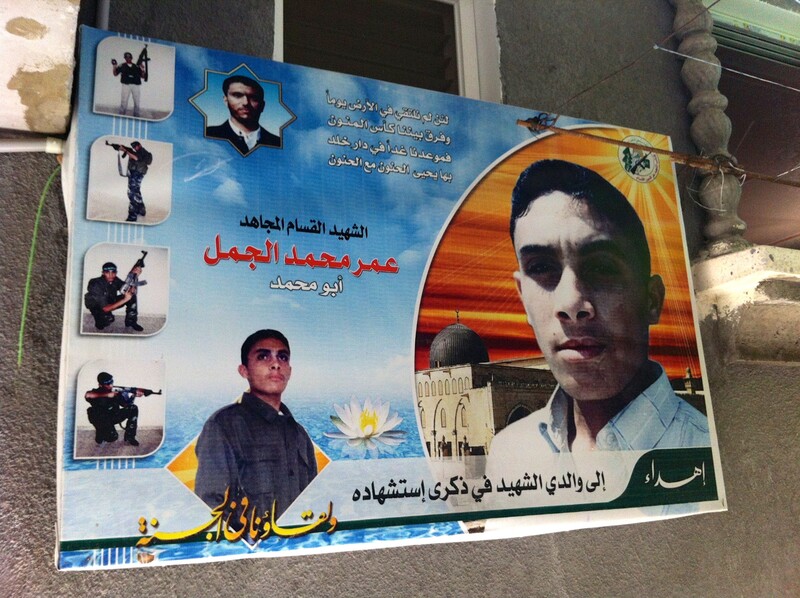
A poster commemorates Omar Muhammad Aljamal, a resistance volunteer who was killed by Israeli occupation forces in Nuseirat refugee camp in March 2004.
Posters, murals and billboards commemorating the thousands of Palestinians from every faction who have given their lives in defense of Gaza and Palestine can be seen all over Gaza. This one is for Omar Aljamal, whose brother Yousef wrote about him in a recent piece for The Electronic Intifada.

A mural pays homage to Gaza’s first responders and life-savers.

A water tower in a Fatah stronghold east of Khan Yunis is sprayed with the factually-inaccurate sectarian slogan “Hamas is Shia.” The police officers sitting at its foot are from Hamas.

A poster in the Gaza City market appeals to Gazans to make donations to help children in Somalia.

A poster in Nuseirat refugee camp calls on people to vote for Gaza-born Muhammad Assaf who is competing in the Arab Idol singing competition.
Landscape
Gaza is small — 40 kilometers north to south and a few kilometers wide — and is densely populated with almost 1.7 million people. Though there are rural and agricultual areas, as far as I could tell there aren’t too many places in Gaza where you can stand without seeing buildings at least in the distance.

Laborers in central Gaza.

An example of bulldozer tracks left by Israeli occupation forces during frequent incursions to destroy crops and uproot trees, in east of Gaza near Khuza’a. All the trees in the distance are on the Israeli side, since Israel has destroyed all the trees on the Gaza side of the fence.

Within sight of Israeli soldiers on watchtowers who frequently shoot at them, Palestinian farmers take in the wheat in Khuza’a, east Gaza.
All photos by Ali Abunimah.





Comments
That's beautiful, and there's so much more!
Permalink iyas replied on
Beautiful post, Ali. When I was there, I would have also added to your great montage the picture of the Moslem and Christian men and women who gather every night at Gaza's YMCA for tea and coffee, the museum in the Mathaf hotel of archeological finds from Gaza's cultural past, the kids using the rubble of many Gaza's destroyed buildings as playgrounds, some of the beautiful community centres that are being built by the locals out of sheer steadfastness and refusal to be bowed, the beachside restaurants that given half a breathing space would challenge most others on the Med for character, if not yet opulence. What a wonderful people - I miss it horribly. And that from a Nabilsi in England.
Same as my observations
Permalink Jeff Warner replied on
My impressions on my trip to Gaza in July 2009 as part of the Viva Palestina humanitarian mission are the same as Ali's. I went expecting devestation with the complete lack of civil structure. But I found what Ali found, that "Gaza is all about life." I was struct by the steadfastnes of the people in the face of the devestating Israeli bombardment. See my write-up on Mondoweiss at
http://mondoweiss.net/2009/08/...
Wonderful photos and commentary that catch the essence of Gaza !
Permalink Carol Scheller replied on
In your short visit, you encompassed so many of the different facets of Gaza, past and present ! This report is a treasure to share with anyone who wants to know what Gaza is like. Heartfelt thanks !
Thanks
Permalink Artemis replied on
I thank you too. It is wonderful to see some of the life of Gaza!
GAZA
Permalink Speedy replied on
I have been to Palestine twice but not to Gaza. I am yearning to be there to experience the hospitality of the people of this beautiful land. Gaza, you are in our veins and our souls. We will always be part of us. We are not free until Palestine is free- so said our President Mandela. God bless you the children, sons and daughters, and the land of Gaza!
Gaza
Permalink Wilandra Dean replied on
I have visited Gaza twice, and am very happy to see Ali's photos. They are much like mine, though I have not learned Arabic and so miss a lot. There are many missions that teach women work so they can make a living, and stories of what the occupation has made necessary. I am eager to return to Palestine and to Gaza to see friends and to worship at holy sites.